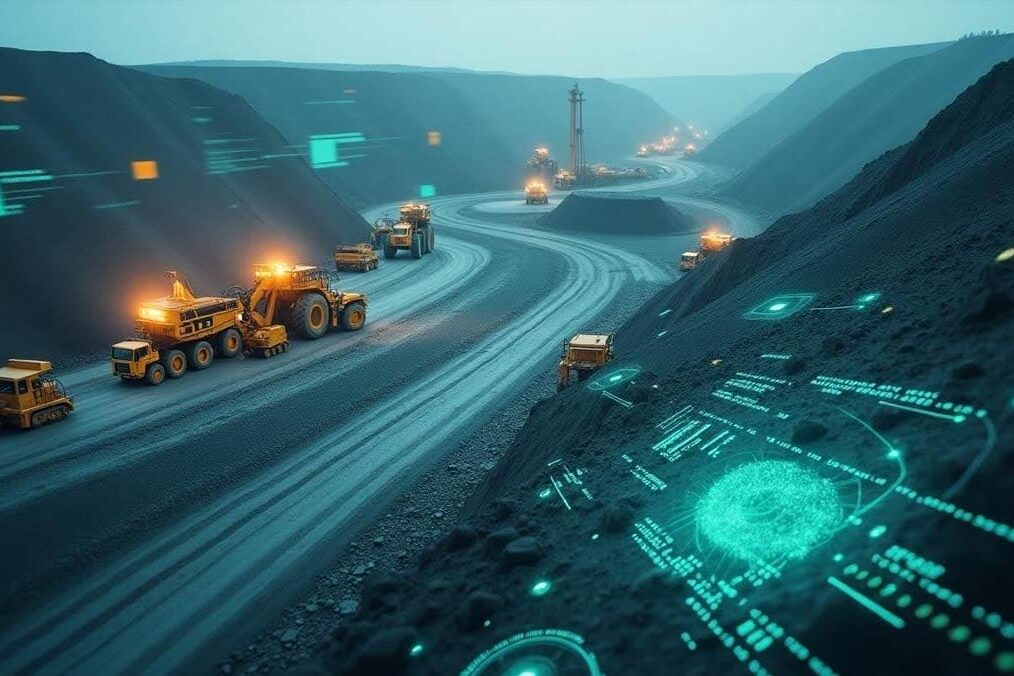The mining industry may not be the first that we think about when it comes to cutting-edge technology, unless it is the edge of a drilling rig. However, artificial intelligence (AI) is having an impact on mining just as it is having on more obviously high-tech industries like life sciences. It is a trillion-dollar industry employing millions of people across the world.
If you consider the main areas of the mining industry, then AI has a potential impact on just about all of them. A mine itself typically has a processing plant, some inventory of the ore that is mined, and then a transportation hub, perhaps a railway or port. Finally, the end product that is mined has to be sold to smelters, refineries or manufacturers. With an average net margin of 11% across the industry in 2024, even a small improvement in efficiency through the use of new technology can have a significant impact on profitability.
Before a mine is drilled, a source of minerals needs to be discovered. Geologists these days use a range of equipment to survey potential sites, including drones, satellite imagery, laser scanners and seismic probes. One example is the use of satellites and seismic sensors to generate 3D subsurface maps, for example, to detect copper deposits. Such technologies generate vast amounts of data that need to be analysed and “mined”, using a mix of AI and other technologies, in order to derive valuable insights. Modern mines make extensive use of self-driving trucks, loaders and drills, some of them huge in scale. Fleets of vast 300-ton self-driving trucks operate at mines using GPS, LIDAR and other technologies, including AI computer vision, to navigate safely, often across rough terrain. One study showed a 15% improvement in operating costs by using autonomous haulage trucks. One company, US Steel, uses generative AI to consult standard operating procedures and diagrams, summarising these for technicians who are troubleshooting problems and would otherwise have to sift through vast technical manuals.
At processing plants, AI models analyse the data from sensors and process control systems. One use of machine learning models is in predictive maintenance, a vital area in an industry where unexpected equipment failure can be a very expensive business. Other machine learning models can be used to optimise the use of energy and water. In one case at a mine in Chile, such a model saved 3 gigalitres of water and 118 gigawatt hours of energy, worth many millions of dollars.
At one Western Australian facility exporting 280 million tons of iron ore annually, the use of eight automated shiploaders increased production by a million tons due to reduced spillage. Even with all the automation, mines still need people to operate them, and technology can play a role here, too, in worker safety. Hard hat sensor technology can measure truck driver fatigue, and miners can be fitted with wearable devices that measure heart rate and exposure to hazardous materials, sending alerts to supervisors if need be.
The mining industry is a controversial one, with issues of climate impact, worker exploitation and the effect on local communities of mining activities. AI cannot in itself mitigate these issues, but by improving worker safety and allowing machines and robots to operate in hazardous areas that are dangerous to humans, it can be a positive force. If AI can help to reduce pollution and use resources better, then this is clearly a good thing.
AI has been shown to improve efficiency right across the set of processes in mining, from exploration to distribution of ore, and we can expect it to continue to be utilised by companies in search of digging deeper for greater efficiency.







